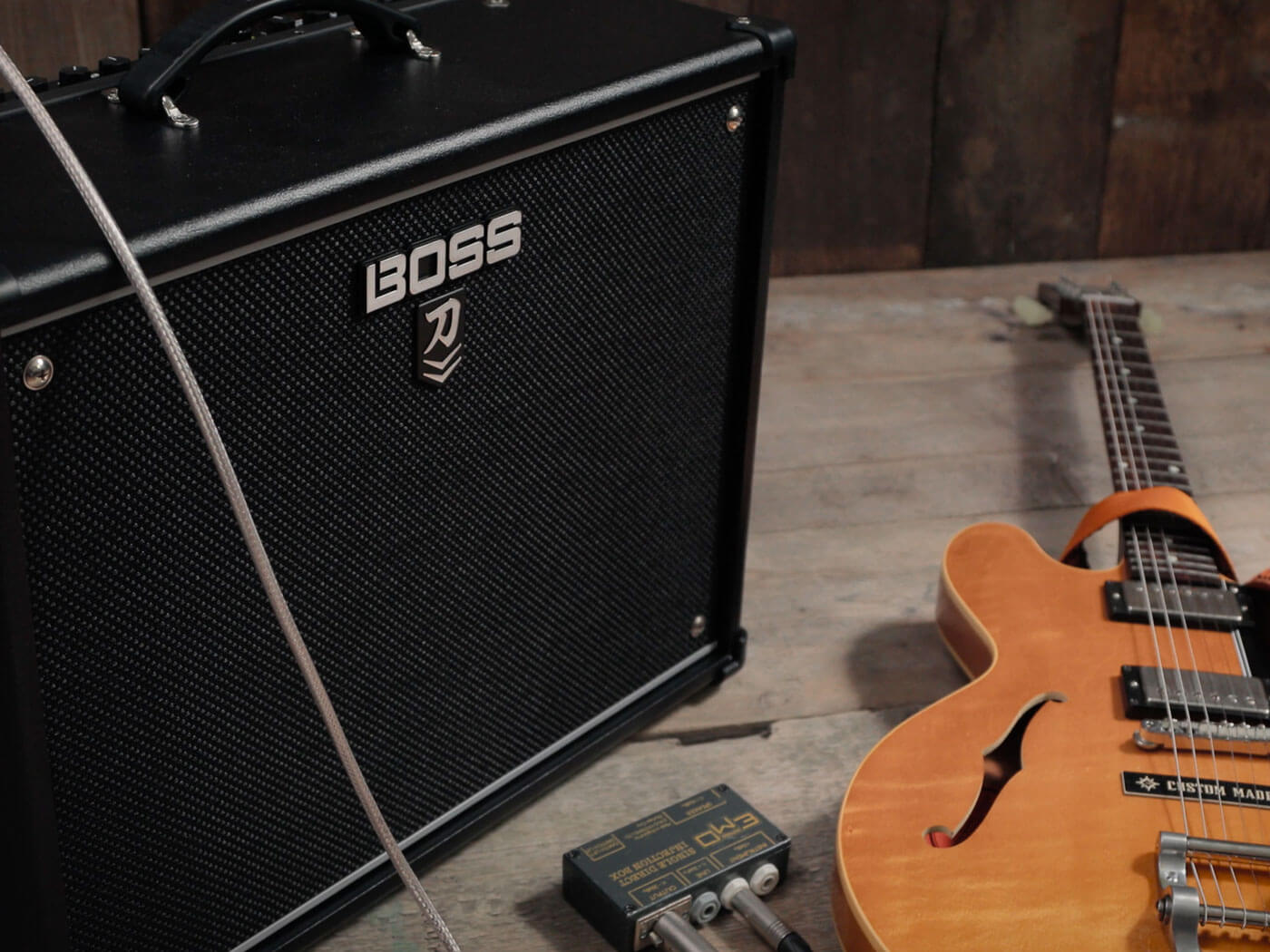Related Tags
Life Without Valves: Can the Boss Katana take on a boutique tube amp and win?
Watch as we put the Boss Katana-100 MKII through its paces in a direct recording scenario.

A few months ago we planned a Guitar.com series entitled Life Without Valves. The premise was simple – this lover of all things vintage and retro was going to take a Boss Katana-100 MKII into a variety of real-world scenarios and see how it stacked up compared to the traditional tube amps I’ve been gigging and recording with for a couple of decades.
Then came COVID-19, and with gigs and rehearsals nixed for the time being, Life Without Valves seemed like it was destined to become Life Without Life Without Valves. However, during these past months of lockdown, due to volume limitations at home, I’ve been doing a substantial amount of direct recording using my Lazy J J10 combo through the mic, speaker and room emulations in a Universal Audio OX. The germ of an idea began to form…
It’s something of a David and Goliath battle but I thought it would be interesting to see how a modern digital amplifier with a UK street price of a little over £300 would compare in a direct-recording shootout with a rig worth more than 10 times the price. Would bringing the Lazy J into the digital world level the playing field? Could the Katana punch quite so far above its price-point?
Why the Katana-100 MKII?
With compact dimensions not a million miles away from the Lazy J’s 5E3-sized cabinet, both the physical size and manageable 14.8kg weight of the Katana-100 MKII are appealing. Too many years of gigging to count have given me an aversion to anything I can’t carry into a venue with a single hand, and in the current climate, anything larger than a 1×12 combo seems like overkill.

Although the Katana has myriad amp tones and effects onboard – and its huge versatility is something we’ll address in a future video, so stay tuned – the boxes it needs to tick for the track-build in this shootout are vintage-style reverb, tremolo and a core tone with enough compression and breakup to transition from clean chime to stinging attack based on picking hand dynamics alone.
The Katana’s crunch setting seems the best starting point as it’s described as “a fat crunch sound that faithfully responds to the nuances of your picking”. Using the red variation, pushing the bass and mids and dialling back the treble, I was able to get in the right ballpark surprisingly quickly. Although the Katana has onboard spring reverb emulation, the Lazy J’s analogue ’verb isn’t particularly splashy sounding, and I found the Katana’s plate reverb to be a closer match. The Katana’s tremolo is less visceral than the tube-driven Lazy J circuit but it’s a pleasing texture nonetheless.
How we did it
When it came to recording, I tracked the parts through the Lazy J while taking a clean DI, then reamped that clean DI back into the Lazy J and the Katana in turn, arranging the parts in the final track so that they alternate between the amps for a direct A/B comparison. The Lazy J was running through my favourite OX cab sim, the Katana via its recording output on the back panel, which comes with its own mic’d speaker emulation.
Check out the video and see how you think the Katana’s sounds compare to the direct signal we get from the Lazy J through the OX – I think you’ll find that they are a lot closer than the gulf in price might suggest.
Read the Guitar.com review of the Boss Katana-100 MKII or find out more about the Katana series from Boss.
